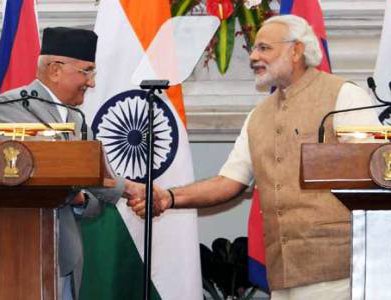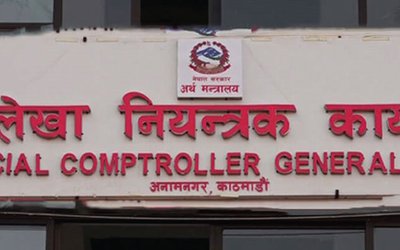
I applaud the ingenuity of whoever came up with the metaphor – ‘Nepal is a yam between two boulders.’ It is quite an apt description. Nepal is wedged between two of the world’s most populous nations, which are competing to emerge as the next superpower. Be it academics, economists, or businessmen, all are betting against either India or China. China, because of its already prominent position in Asia and India because of its pre-eminence in South Asia are working their way into assuming a dominant position over Asia and then over the world. Nepal is strategically located between the two – its position can be a boon or a curse. Either it can utilize its position to economically flourish or be crushed by not choosing sides diplomatically.
Nepal can face either of the consequences; I emphasize that they are equally probable. Nepal can be what Rishi Raj Adhikari, the executive director of the Institute of Foreign Affairs, says it sees itself as “a vibrant bridge between the two nations.” Nepal can facilitate the India-China trade in many ways. It can use its strategic position to facilitate cultural exchanges between the two nations. Moreover, it can also utilize the opportunity to import necessary items and adapt technologies from India and China at a subsidized rate. Attracting foreign investments from the countries is another area that can be explored. Nepal can further increase the surge of tourists from India and China by promoting the cultural similarity with as well as cultural distinctiveness from those of India and China. Nepalese economy can greatly benefit from the Indo-Chinese collaboration.
On the other hand, if it continues to appear as what it does currently – one who plays good cop-bad cop – Nepal can lose the advantage offered to it by its strategic location. Nepal’s relation with India was soured after the four month long fuel crisis. This fuel crisis made Nepal truly understand the repercussions of its dependence on India for essential supplies, such as fuel, food, and medicine. Hope for the borders to open did not provide Nepal any way out of the desperation caused by the unending fuel crisis. What about China? – this was the common question asked by many Nepalese. Seeing no way out, the Government of Nepal turned north to another of its powerful neighbour, China came to the rescue by agreeing to supply a third of the country’s required fuel, visits took place, followed by a promising tweet by Prime Minister KP Sharma Oli, “Nepal has signed important agreements with China for the economic development of the country.”
Nepal has accepted China’s offer and probably views the country as its saviour. However, Nepal should not, even for a moment, forget that India, despite its high and mighty claims, feels threatened. India has a strong market in Nepal and will not be happy if it loses its economic hold on the nation. Following China’s assurance to supply fuel to Nepal PM Oli’s visit to China, which immediately succeeded his visit to India, it was hard to turn a deaf ear to the various speculations in the Indian media regarding the future of Nepal-India relations post Nepal’s deal with China. It should not be forgotten that the story revolves around claims such as “Nepal accused the Indian government of sympathizing with the Madhesi protest and abetting the blockade, which resulted in a shortage of fuel, medicines, and other vital supplies that nearly cripples the country.” The Indian people and the government should be aware of the story on the other side of the coin; however, this sentiment is more likely to stay. Nepal should be wary of the popular Indian sentiment – Nepal is initiating strife between itself and its big brother neighbour who it is heavily reliant on. Indian media also sees Oli’s enthusiastic support of China’s plans to establish trans-Asian supply routes as an effort to overstep India’s influence on the continent.
Now is the time for economic and political diplomacy. Both countries are keen on ‘helping’ Nepal, and Nepal should not anger one neighbour while making trade ties with the other. For example, one should not forget that India, because of its sheer size and spending capacity, offers bigger market for China than Nepal ever has been able to. Therefore, it is highly unlikely that China would help Nepal to an extent that puts its economic relationship with India at a risk. Nepal should be able to clearly foresee such circumstances and plan its moves accordingly and carefully tread on the delicate relationship that exists between two of its powerful neighbours. We want to keep both of them interested but not do their bidding.
- Poor (country) on a pile of money
- Dec 16, 2016
- Careful Financial Regrouping Cutbacks Imminent
- Nov 18, 2016
- Women Securing Water
- Oct 01, 2016
- Faithful or Fearful Fluctuations
- Aug 31, 2016
- Walking on Prachanda path?
- Aug 11, 2016

















